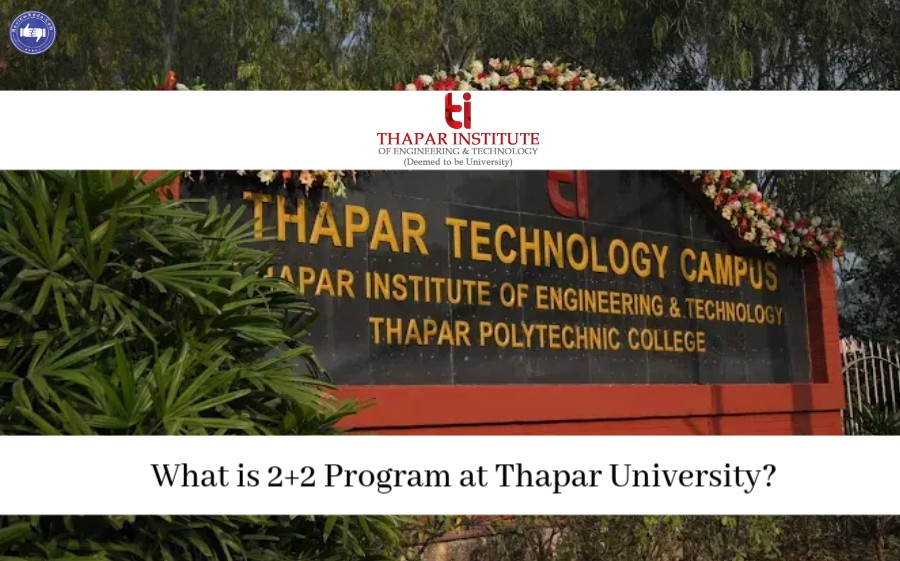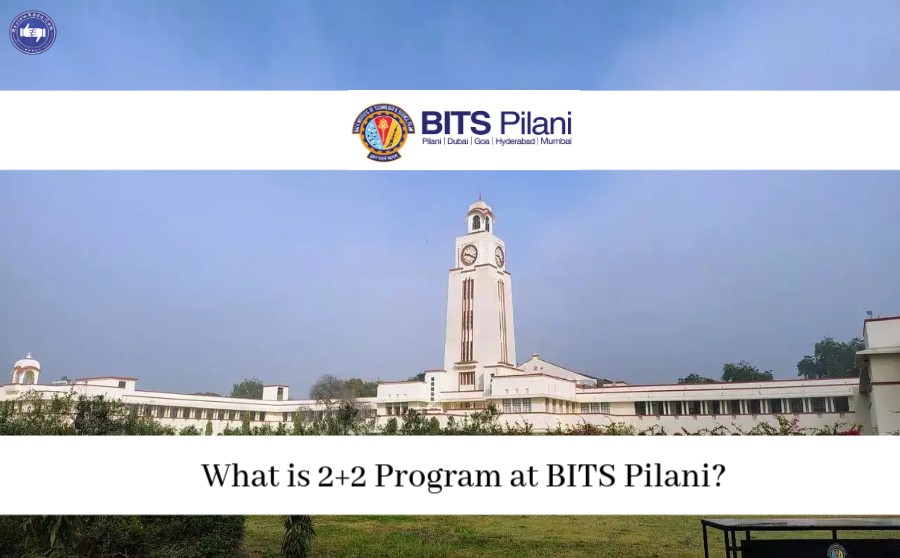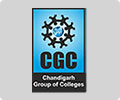UCAT vs NEET vs MCAT vs BMAT vs GAMSET vs UMAT
Overview of Medical Entrance Exams
In the context of health and medical education, different entrance examinations help open the doors for prospective medical students worldwide. This article delves into six prominent exams: These include UCAT {University Clinical Aptitude Test}, NEET {National Eligibility cum Entrance Test}, MCAT {Medical College Admission Test}, BMAT {BioMedical Admissions Test}, GAMSAT {Graduate Australian Medical School Admissions Test} and UMAT {Undergraduate Medical Admissions Test}. In fact, they are very different in terms of their characteristics, structure, and admission criteria, and it is important for those who will continue their education to get acquainted with them.
1. Exam Formats and Structures
1.1 UCAT
The University Clinical Aptitude Test, abbreviated as UCAT, is significant in admitting students who wish to join medical and dental schools in the United Kingdom, Australia, and New Zealand. This is, therefore, a computer-based test that tests several skills and competencies relevant to all health careers. Now, it will be pertinent to provide you with an elaborative account regarding the UCAT concerning its formation, who can apply for the test, the format for the test, and the method of scoring, and other essential features.
Purpose and Importance
The UCAT, therefore, aims to determine a candidate's fitness for medicine or dentistry. As distinct from many academic tests, the UCAT does not measure one's body of knowledge in a particular discipline since it tests how one reasons, solves problems, and deals with others. For the same reason, as a standardized test, it helps the universities use a common ground to assess students from different backgrounds.
Test Structure
The UCAT consists of five distinct sections, each targeting specific cognitive skills:
1. Verbal Reasoning
-
Objective: This is done to compare and contrast the subject's competency in evaluating and even interpreting writing content.
- Format: This type of test involves reading text passages and answering questions based on one's understanding of the text.
- Skills Tested: Understanding the information and knowing what conclusion can be derived from it.
- Time Limit: 21 minutes for 44 questions, which typically includes 11 passages.
2. Decision Making
-
Objective: This section tests logical understanding and the capacity to make wise decisions using information.
- Format: Such questions may include interpreting information presented in texts, diagrams, and graphs.
- Skills Tested: Thinking skills, critical thinking, proper evaluation of information, and problem-solving abilities.
- Time Limit: There was an average time of 31 minutes spent on 29 multiple-choice questions.
3. Quantitative Reasoning
-
Objective: This section identifies the candidates' ability to solve numerical problems.
- Format: Knowledge is tested concerning data analysis, simple arithmetic computations, percentages, ratios, and proportions, as well as statistical analysis.
- Skills Tested: Operations that involve counting and, at the same time, applying mathematical problems.
- Time Limit: The average amount of time taken or 'duration,' therefore, is 24 minutes per 36 questions.
4. Abstract Reasoning
-
Objective: This section measures non-verbal reasoning skills.
- Format: Candidates recognize patterns and make logical connections among shapes and diagrams.
- Skills Tested: Pattern recognition and logical reasoning.
- Time Limit: 13 minutes for 55 questions.
5. Situational Judgment
-
Objective: This section evaluates ethical reasoning and interpersonal skills in healthcare contexts.
-
Format: Candidates respond to realistic scenarios that assess judgment and decision-making.
- Skills Tested: Ethical decision-making, decision-making priorities, and recognizing the implications of decisions.
- Time Limit: Telephone interview took 26 minutes to complete 69 questions
Scoring System
The scoring for the UCAT is structured as follows:
-
Sections 1-4 (Verbal, Decision, Quantitative, Abstract Reasoning): All these sections are marked from 300 to 900. The maximum score that can be obtained from the sum of scores of those four parts is between 1200 and 3600.
- Situational Judgment: This is a scaled section, marked out of 100 and assigned into four achievement levels (1 to 4). The highest level of judgment is illustrated in Band 1, while the lowest level is represented by Band 4.
Eligibility Criteria
The UCAT is administered to all the candidates who satisfy the following attributes.
-
Education level most preferred: completion of secondary education level or class 12 or a holder of a bachelor's degree.
- Final-year students in secondary school or university and university students in their final year for a bachelor's degree are also eligible.
Test Format and Administration
-
Conducted By: The UCAT is a computer adaptive test, and Pearson VUE manages it.
- Duration: The test takes 2 hours, including the time taken to give instructions before the different sections of the test.
- Exam Fees: The fee for the UCAT is around £120, nearly equal to Indian rupees of 11,370.
-
Test Dates: The UCAT is usually held at the end of September or the beginning of October of the year specified. These may not necessarily be the same for different years; therefore, the candidates are advised to consult the UCAT’s official website.
1.2 NEET
NEET, or National Eligibility cum Entrance Test, is a common entrance examination for admission to undergraduate medical courses in the country, inclusive of the MBBS and BDS. The NATIONAL ELIGIBILITY CUM ENTRANCE TEST for admission to MBBS seats under the control of the Ministry of Health and Family Welfare is one of the major entrance tests for students who want to pursue their carrier in the Medical field and join their desired college.
Exam Structure and Format
NEET consists of 180 multiple-choice questions divided among three subjects: science stream, which includes Physics, Chemistry, and Landy (Botany and Zoology). The duration of each examination is 3 hours, with questions that test content Area knowledge and their ability to apply them across various contexts.
Scoring and Marking Scheme
NEET has 200 questions, of which the candidate scores 4 marks for the right answer, and for every wrong attempt, the candidate loses 1 mark. The total possible score ranges from 0 to 720, and the exam is quite competitive.
Eligibility Criteria
The details that the candidates have to fulfill to be eligible for NEET are as follows:
-
Age: A candidate has to be over 17 years of age as per the age evaluated as of the end of the calendar year for which they are applying for admission.
- Qualifying Exam: They should have cleared 10+2 or equivalent exams with above 50% average marks in Physics, Chemistry & Biology, or Biological Technology.
- Subject Combination: A candidate should have studied Physics, Chemistry, Biology/ Biotechnology, and English as subjects in their qualifying examination.
Reservation and Quota
NEET follows a specific reservation and quota system for various categories, including:
-
All India Quota: 15 percent of All India Quota is used for the total number of seats for all the candidates' categories.
- State Quota: The remaining 85 percent of the seats are distributed to the concerned state governments for justices of the High Court.
- Other Quotes: There may be reserve quotas for SC, ST, OBC, and PwD categories in addition to the percentage of seats to be filled by the respective institutes/ organizations.
Exam Centers and Languages
Like other examinations, NEET is also conducted in different centers in India. The exam is in 13 languages: Assamese and Bengali, English, Gujarati, Hindi, Kannada, Malayalam, Marathi, Oriya, Punjabi, Tamil, Telugu, and Urdu.
Counseling and Seat Allotment
There is a committee call after the NEET results. When the declaration of the NEET results, the All India quota counseling is again done by the Medical Counseling Committee (MCC), but the respective state government does the counseling of the state quota. Admission is made in accordance with the NEET score and choices of the candidates who are provided with seats accordingly.
Importance of NEET
NEET has thus brought a drastic change in the system of medical education in India by:
-
I am making it possible to level the playing ground for all candidates for medical schools.
- The following is why it seeks to admit students fairly and most transparently.
- You are minimizing the stress of several admission tests for students.
- Overall, it is necessary to develop the quality of medical education by selecting deserving candidates.
1.3 MCAT
MCAT stands for Medical College Admission Test, which is very useful in the admission process of medical colleges in the USA and Canada. This article provides a complete guide to the MCAT: its layout, divisions, score reporting mechanism, admission requirements, and other important things that need to be known.
Overview of the MCAT
Purpose and Importance
It should be noted that the MCAT is intended to measure referents to the knowledge, skills, and abilities needed in medical school and practicing medicine. It tests a candidate's knowledge about certain principles in science, reasoning, and problem-solving, which are crucial for survival in the healthcarehcaression. It is a definite fact that the preparations and the scores obtained in the MCAT are significant determinants of the decision concerning admission of the candidates in medical schools.
Test Format
The MCAT is one computer adaptive exam that lasts for nearly a week, taking about 7—5 hours, including breaks. The time allowed for the exam is divided into segments in which different aspects of knowledge and skills conducive to medical education are tested. The four main sections of the otherwise referred to as the Medical College Admissions Test are;
1. Biological and Biochemical Foundations of Living Systems
-
Content: This section tests knowledge of biology, organic chemistry, and biochemistry. It mainly studies activities relevant to every living entity, such as cellular and metabolic activities and genetic replication.
- Key Topics:
- Protein properties, the structure of the protein molecules, and the amino acids that build up proteins that form their part.
- The process entails passing on genes from one generation to another, another which are responsible for making up the characteristics of an offspring.
- Biological systems and their interdependence
- Processes of growth, reproduction, and response to environmental stimuli
- Format: 59 questions (95 minutes).
2. Chemical and Physical Foundations of Biological Systems
-
Content: This section tests knowledge of chemical and physical changes that form the basis of the human body and other biological systems. Some of the topics are general chemistry, physics, and biology.
-
Key Topics:
- Principles of fluid dynamics and gas exchange
- Chemical reactions and thermodynamics
- Molecular Structure and function of macromolecules
- What seed and energy, work; force as concepts of a biological organism
- Format: 59 questions (95 minutes).
3. Psychological, Social, and Biological Foundations of Behavior
-
Content: The following subtopics are discussed: Psychological, social, and biological factors that affect behavior and health. The issues of psychology, sociology, and biology are touched on in its framework.
- Key Topics:
- Psychological theories of behavior
- Social structures and their impact on health
- Biological bases of behavior and mental processes
- Cultural and social influences on health outcomes
- Format: 59 questions (95 minutes).
4. Critical Analysis and Reasoning Skills (CARS)
-
Content: This part consists of assessing how a student comprehends, adds up, and interprets passages from humanities and social science.
- Key Topics:
- Understanding and evaluating arguments
- Analyzing complex texts
- Drawing inferences and conclusions from written material
- Format: 53 questions (90 minutes).
Scoring System
The MCAT uses a unique scoring system:
-
Section Scores: An average mark of 125 is given to each section, and the marks range from 118 to 132.
-
Total Score: The mean scores for the MCAT range from 472 to 528, with average and median MCAT scores of 500.
- Percentile Ranking: Apart from the obtained scores, the candidates are also provided with the percentile ranks that depict the candidate's performance compared to other candidates. This will assist the admissions committees in determining how a candidate's score ranks with the other applicants.
Eligibility Criteria
To be eligible to take the MCAT, candidates must: In addition, the following are some of the requirements that one has to meet to qualify to be given the MCAT:
-
Intend to Apply to a Health Professions School: The first condition is that the candidates applying should have the goal of admission to medical schools or other institutions that offer health professions.
- Educational Background: As the examination is highly tough, the candidates should enroll at their GCE ‘A’ level or equivalent in subjects like biology, chemistry, physics, and psychology/sociology.
- Special Permissions for International Candidates: In case the applicants come from other countries as international students, for instance, India, certain permission may be required if they are not applying for admission to health professions school.
Registration and Fees
-
Registration: Registration for the MCAT is done through the AAMC website, and the above details indicate that. The test can be taken at any location and any date of the year; however, it is better to arrange the test ahead of time since the slots can be filled quickly.
- Fees: The fee to register for the MCAT is around 335 USD, and other charges include rescheduling or transferring the test center.
1.4 BMAT
The BMAT, also known as the BioMedical Admissions Test, is considered an important and popular standardized test widely used for admission of candidates into different medical, dental, and biomedical science courses offered in various universities in the United Kingdom and other parts of the world. This exam also mimics the proficiency and skills of the candidate in sciences, including writing skills. The following are more details about the BMAT, what it is made of, who can write the BMAT, how the BMAT is marked, and other facts that regard BMAT.
Overview of the BMAT
Purpose and Significance
The BMAT is intended to determine a candidate's likelihood of performing well within the realms of medical as well as biomedical learning. In contrast to many other tests, the BMAT is geared towards still reasoning, problem-solving, and the demonstrable capacity to apply scientific knowledge. It is mandatory to be taken for one to be considered for admission to several prestigious universities, making it vital for all those intending to practice medicine.
Test Structure
The BMAT is divided into three sections, and each of them aims to assess different skills and knowledge areas:
Duration
Overall, the duration taken to complete BMAT is 2 hours and 30 minutes. Each section has a specific time allocation that candidates must manage effectively.
Section 1: Aptitude and Skills
-
Format: This section comprises 32 multiple-choice questions.
- Content: It assesses problem-solving abilities and critical thinking skills. These may comprise logical reasoning questions, understanding arguments, and data interpretation.
- Time Limit: 60 minutes are allowed for candidates to respond to this part of the test.
Section 2: Scientific Knowledge and Applications
-
Format: This section comprises twenty-seven multiple-choice questions.
- Content: It challenges the knowledge in the scientific disciplines usually learned in secondary school, up to sixteen, such as Biology, Chemistry, and Physics. Biology tests often include questions that call for the explanation of a concept or the presentation of arguments in support of a hypothesis. The candidates must be prepared to provide proof proof of their knowledge of these principles and how they can be applied.
- Time Limit: Each candidate will be allowed to write for this section for only 30 minutes.
Section 3: Writing Task
Format: In this section, candidates must write one text in English in response to a choice of tasks identified by three numbers.
- Content: It tests one’s capacity to formulate concepts, thinking processes, and writing skills. There is also clarity, coherence, and good argument structure that the candidates must present well.
- Time Limit: Writing is the final test that takes 30 minutes for the candidates.
Scoring System
The BMAT uses separate marking schemes for all of its sections:
-
Section 1 – Section 2: Correct answers to questions earn the student one mark. The scores of these sections are normalized on a scale of 1 – 9, with 9 being the highest.
- Section 3 (Writing Task): This section is assessed using two criteria:
-
Content Quality: Measures on a range of 0 to 5, with a high score of 5 reflecting high-quality standards.
-
Quality of Written English: Standard 7 assessments were given scores from A to E, with ‘A’ being the highest.
Eligibility Criteria
Eligibility for the BMAT typically includes:
-
Educational Background: Applicants should be studying for their final year of secondary education or have already done their A-levels, IB, or any qualification akin to these.
- University Requirements: Some universities may require candidates to have prior education or experience in medicine or biomedical science-related disciplines.
Registration and Test Centers
BMAT has to be sat through a center of your choice, which may include your school or an accredited BMAT center. Registration is normally done during the preparation period before the exam and according to certain schedules that candidates are encouraged to inquire about.
1.5 GAMSAT
GAMSAT stands for Graduate Medical School Admissions Test, and it's an assessment test aimed at candidates who wish to join graduate medical courses in Australian, Ireland, and UK universities only. It checks the literacy level, knowledge, and skills in a series of areas of disciplines – science and humanities – before assessing the candidate for admission into medical school. This article contains a detailed description of the GAMSAT, including its formation, qualification, scoring system, and other relevant information.
Overview of GAMSAT
Purpose and Importance
As for GAMSAT, this test is designed for graduates who want to attend a medical or dental school that provides graduate-entry programs. Unlike undergraduate programs, which expect their entrant to possess A-levels or equivalent qualifications, graduate-entry programs welcome candidates from any background, whether in humanities, social sciences, or other science-related courses. The GAMSAT is also a major component of the selection in that it measures the reasoning and analytical ability of an aptitude that is required for medicine.
Test Structure
The GAMSAT consists of three sections, each designed to assess different competencies:
Section 1: Humanities
-
Content: In this section, we assess the applicants' skills in comprehending and evaluating the written text about humanities subjects like literature, philosophy, and social sciences.
- Skills Tested: The candidates will read and analyze texts on critical thinking, understanding, and reasoning inference.
- Format: These usually consist of sections that are fashioned as sequences of passages with multiple-choice questions for comprehension and analysis.
Section 2: Written Communication
-
Content: In this section, the candidates are expected to write two essays about questions given to them.
-
Skills Tested: Writers need to organize their thoughts, express them logically and comprehensibly, and present their opinions through structured and brief arguments
-
Format: The essays are written within a specific period, and the essays are graded based on their organization, language, and the reasoning employed in them.
Section 3: Science
-
Content: This section reviews content knowledge in biology, chemistry, and physics; these are some of the common—and compulsory—sciences taught in most high schools and other institutions worldwide, per the revised syllabi.
- Skills Tested: Using logic and reason is also required, while Science involves reasoning, problem-solving, and the ability to analyze data.
- Format: Includes multiple-choice questions based on scientific concepts, principles, and reasoning.
Duration
GAMSAT, a 6-hour test, is split into sections, each scoring separately. This includes breaks between sections, allowing candidates to manage their stamina throughout the test.
Scoring System
-
Section Grades: For the GAMSAT, every part gets its grade. Plus, you'll get one total grade. That's the big picture.
- Overall Grade: They figure this out from your scores in all three parts. If you score high, you did awesome. They use the grades to see how you did compared to the others who took the test.
- Percentile Ranking: Usually, they turn your GAMSAT grades into percentiles. This way, you can see how you stacked up against everyone else who took the test.
Eligibility Criteria
For GAMSAT qualification, there are a few mandates.:
-
Educational Background: you must have a bachelor's degree or be about to get one. It doesn't matter what your degree is in – anything goes!
- Application to Graduate Programs: GAMSAT requires you to apply to particular medical programs.
- Age and Experience: It doesn't matter how old you are or what you've done. Whether you're fresh out of school or looking to change careers, we welcome everyone!
Universities Accepting GAMSAT Scores
The GAMSAT test is acknowledged by many universities. They're in Australia, Ireland, and the UK. It's for their medical graduate programs. Some notable institutions include:
Australia
-
University of Sydney
- University of Melbourne
- University of Queensland
-
Flinders University
- Griffith University
UK
-
St George's, University of London
- Swansea University
- University of Nottingham
-
Keele University
- University of Exeter
Ireland
-
Royal College of Surgeons in Ireland
- University College Dublin
- University of Limerick
1.6 UMAT
The Undergraduate Medicine and Health Sciences Admission Test, or UMAT, was a key hurdle for medical students in Australia. But things have changed since 2019. UMAT is out, and the University Clinical Aptitude Test, UCAT, has taken its place. This switch applies to those pursuing a medical or dental career in Australia and New Zealand.
Eligibility
In the UMAT, students fresh out of secondary school or those in their last year were allowed to participate. This includes Year 12 in Australia and Year 13 in New Zealand. Medical students or qualified health professionals could also take the UMAT with prior permission.
Test Format
The UMAT was a paper-based test comprising three sections:
-
Section 1 (Logical Reasoning and Problem Solving): 48 questions in 70 minutes
- Section 2 (Understanding People): 44 questions in 55 minutes
- Section 3 (Non-Verbal Reasoning): 42 questions in 55 minutes
Skills Assessed
The UMAT assessed skills similar to the current UCAT, focusing on reasoning and interpersonal abilities. The sections evaluated:
-
Logical reasoning, problem-solving, and critical thinking
-
Understanding of people, thoughts, opinions, and intentions
- Interpretation of patterns, shapes, and relationships
Scoring
The UMAT used a scoring system different from the UCAT. Each section was scored separately; the total score was used for admissions. There was no overall combined score.
Acceptance
Many Australian universities used the UMAT for admission into their undergraduate medical and health science courses. But now, UCAT has replaced it. So, no universities use the UMAT for admissions anymore.
2. Acceptance of Exam Scores by Universities (Except India)
2.1 UCAT
Here is the information about universities accepting UCAT scores, presented in a tabular form:
2.2 NEET
Here is a table showing the acceptance of NEET exam scores by universities outside of India:
The table illustrates that some colleges in Nepal and Bangladesh now take NEET scores for MBBS acceptance. But, international colleges accepting NEET scores is less than the vast acceptance within India.
Remember, the international NEET score acceptance could change, so students must always check the new information with their chosen colleges or go to the official sources.
2.3 MCAT
Here is a table summarizing the acceptance of MCAT exam scores by various universities outside of India:
Notes:
-
The MCAT is mainly needed for med schools in the US and Canada.
- A few universities in Australia accept MCAT scores for post-grad programs, not usual for undergrad med applications though.
- Criteria for admission can greatly fluctuate based on the program and year. Therefore, checking specific needs with the universities is a must for applicants.
This table provides a snapshot of the acceptance of MCAT scores by various universities, highlighting the importance of the exam in the medical school admissions process in these regions.
2.4 BMAT
Here is a tabular summary of universities that accept BMAT exam scores for admissions, excluding those in India:
Notes:
-
By the time we reach 2024, the BMAT will no longer be in use. Many universities, previously needing this test, are moving toward the UCAT or different admissions tests.
- The matrix you see here shows universities that once took BMAT scores for different medical studies, mostly looking at undergraduate medicine.
- Admission requirements and the significance of BMAT scores may vary by institution, with some universities placing more emphasis on these scores than others.
This table provides a concise overview of the international landscape for BMAT acceptance outside of India, reflecting the diversity of institutions that utilize this assessment in their admissions processes.
2.5 GAMSAT
Here is a tabular representation of universities that accept GAMSAT exam scores for graduate entry medical programs, excluding those in India:
- Notes:
-
GAMSAT score requirements might change yearly. They depend on who's applying and the rules at different schools.
- Sometimes, your GPA or interviews and personal statements could also matter.
- Each school has different needs, so it's smart to find out what they are.
2.6 UMAT
Here is a table showing the universities that accepted UMAT exam scores for admissions, excluding universities in India:
A few key points about the UMAT exam and its acceptance by universities:
-
In the past, UMAT served as the entry exam for medical and health science majors in Australia and New Zealand. Since 2019, though, UCAT took its place.
- It assessed skills like logical reasoning, understanding people, and non-verbal reasoning.
- Each university had its own criteria for UMAT cut-off scores and weightage in the admissions process, along with other factors like interviews and high school grades.
- The UMAT was not used for postgraduate medical programs or international student admissions.
So in summary, the UMAT was accepted by the majority of medical schools in Australia and New Zealand, with each institution having its own specific requirements and selection process involving the UMAT scores. However, it is no longer used for admissions as of 2019.
3. Comparative Analysis of the Exams
3.1 Focus Areas
-
UCAT: Emphasizes cognitive abilities and situational judgment.
- Neet: Focuses on high school-level science knowledge.
-
MCAT: Assesses a broad range of scientific knowledge and critical thinking.
- BMAT: Evaluates aptitude and scientific knowledge.
- GAMSAT: Combines humanities and sciences for graduate entry.
- UMAT: Previously assessed reasoning and interpersonal skills.
3.2 Geographic Relevance
-
UCAT and BMAT: Primarily for the UK and some Commonwealth countries.
- NEET: Exclusively for India.
- MCAT and GAMSAT: Internationally recognized, especially in the US, Canada, and Australia.
3.3 Difficulty and Preparation
The perceived difficulty of each exam varies based on individual strengths and educational backgrounds. Take this as an example: pupils adept at learning by heart might find NEET easier to handle. In contrast, those who are good at analyzing things deeply might shine in the MCAT.
Preparation Tips for UCAT, NEET, MCAT, BMAT, GAMSAT, and UMAT
Getting ready for med school exams means you need a plan that fits each test's style and topics. Now, let me share tips for these six tests: UCAT, NEET, MCAT, BMAT, GAMSAT, and UMAT.
UCAT Preparation Tips
-
Get to know the layout of the UCAT exam, which consists of five sections. Utilize authorized practice resources to understand the questions you will encounter.
- Manage your time effectively by practicing for the UCAT, a timed test, ensuring you can complete sections within the allocated time. Utilize timed practice exams to enhance both your pace and precision.
- Use online tools: Many online resources and question banks have been created for UCAT exam preparation. Platforms such as MedEntry and Kaplan provide practice questions and simulated exams.
- Concentrate on Situational Judgment: This part evaluates your capacity to comprehend practical situations in the real world. Engage in situational judgment scenarios to enhance your critical thinking abilities.
- Review Performance: After each practice test, analyze your performance to identify areas for improvement. Focus on weak sections in your study plan.
NEET Preparation Tips
-
Comprehend the Syllabus: NEET includes Physics, Chemistry, and Biology topics in the NCERT syllabus. Ensure you have a good understanding of these topics.
- Develop a Study Plan: Assign designated times for individual subjects and adhere to your plan. Frequent review is crucial for keeping knowledge.
- Utilize NCERT Textbooks: Since NEET exams center around the NCERT curriculum, use these as your main study resources.
- Practice solving past NEET papers to become familiar with the exam format and question styles. This will also assist you in efficiently managing your time while taking the exam.
- Practice taking practice exams frequently to increase endurance and enhance your examination tactics.
MCAT Preparation Tips
-
Start Early: Begin your preparation at least six months before the exam. This allows ample time to cover all sections thoroughly.
- Utilize AAMC's Official Resources: The AAMC offers students official practice tests and resources. Use these resources to ensure the exam is accurately represented.
-
Emphasize Critical Thinking: The MCAT evaluates your skill in examining and utilizing concepts. Participate in hands-on learning methods like explaining concepts to others or conversing about them in study circles.
- Practice Writing: Improve your understanding and analytical abilities by practicing writing essays and summarizing articles for the CARS section.
- Review Science Concepts: Make sure you grasp the concepts of biology, chemistry, and physics well. Use review books and online courses to reinforce your knowledge.
BMAT Preparation Tips
-
Get familiar with the Test Layout: The BMAT comprises three parts. Learn the different question types in every section, particularly the writing assignment.
- Practice solving past BMAT papers to familiarize yourself with the question structure and time limits. This will assist you in recognizing your strengths and weaknesses.
- Improve Writing Abilities: In Section 3, hone your essay writing skills on different subjects. Pay attention to organizing your points clearly and succinctly.
- Engage in Scientific Reading: Reading scientific articles and literature enhances your understanding of scientific concepts and critical thinking skills.
- Time Management: When practicing, focus on efficient time management, particularly in the writing part.
GAMSAT Preparation Tips
-
Examine the Syllabus: Get to know the GAMSAT syllabus, covering humanities, social sciences, and scientific ideas.
- Practice Writing Essays: Section 2 necessitates the composition of two essays. To enhance your writing speed and clarity, try writing within time limits as a part of your practice routine.
- Interact with Various Materials: Explore a variety of texts such as literature, articles, and scientific papers to improve your understanding and critical thinking abilities.
- Employ GAMSAT-specific practice questions and past papers to understand the exam format and types of questions.
- Participate in Study Groups: Work with classmates to discuss ideas and solve problems. This can provide different perspectives and enhance understanding.
UMAT Preparation Tips
Understand the Layout: Even though the UCAT has replaced the UMAT, if you prepare for comparable evaluations, familiarize yourself with the structure and types of questions.
-
Practice with Sample Questions: Practice with practice questions to become familiar with the test's logical reasoning and situational judgment parts.
- Enhance Critical Thinking: Enhance your critical thinking abilities by engaging in puzzles, logic games, and reading comprehension exercises.
- Time Yourself: Time yourself during practice to make sure you finish the sections on time.
- Review and Reflect: After practice tests, review your answers to understand your mistakes and improve your reasoning skills.
General Exam Preparation Tips
No matter the exam type, certain general tips can boost your readiness:
-
Develop a study plan: Set up a well-organized timetable that dedicates specific periods for each course and incorporates consistent review sessions.
- Practice Self-Care: Make sure you practice self-care by getting sufficient sleep, eating healthily, and staying active to look after your overall health and happiness.
- Utilize Active Learning Strategies: Interact with the content by summarizing, educating others, or utilizing flashcards.
- Take Breaks: Take regular breaks when studying to help improve focus and memory retention.
- Remain optimistic: Keep a positive attitude and seek help from friends, family, or study groups when necessary.
By utilizing specific preparation techniques, applicants can improve their readiness for exams such as UCAT, NEET, MCAT, BMAT, GAMSAT, and UMAT, ultimately improving their likelihood of being accepted into medical schools.
Future Trends in Medical Admissions Testing in India and Abroad
Medical admissions tests are changing quickly. These changes are due to shifts in education policies, tech progress, and the growing need for healthcare workers. This part looks at what's coming up next in medical admissions tests in India and around the world. It points out important trends and expected changes.
1. Standardization and Consolidation of Exams
India: In 2025, a big change is coming to how doctors are admitted to postgraduate programs in India. The National Exit Test (NExT) will take over from the NEET PG and FMGE exams. This change means everyone will take the same test to get into these programs. This new step will make the admissions process simpler and make sure that all medical graduates are tested consistently.
Abroad: Just like how many nations are pushing to equalize healthcare entry tests for fair assessing of applicants. Take the UK, for example; they're currently utilizing both the UCAT and BMAT together. However, they're also thinking about the possibility of a unified method for medical school entry exams.
2. Increased Emphasis on Holistic Admissions
India: More people now understand the importance of looking at the whole picture in medicine admissions. It's not just about test results but also things like interviews and what you do outside school. Even personal statements matter. Next, may soon make this all the norm, using various ways to judge if someone is right for medicine.
Abroad: Quite a few med schools in places like the United States and the United Kingdom have started to use holistic admissions methods. The MCAT? It's seen more and more as part of a bigger picture. A picture that includes things like recommendation letters plus personal notes.
3. Integration of Technology in Testing
India: The use of technology in medical entrance exams is likely to increase, with digital platforms facilitating online testing and remote proctoring. This shift can enhance accessibility for students nationwide, especially in remote areas. The NEET exam has already seen some digital innovations; further advancements are expected with the introduction of NExT.
Abroad: Globally, tech is changing how we take tests. It's now usual to take tests on a computer. This lets us use a cool thing called adaptive testing. In this style, the hardness of the questions changes depending on the test-taker's answers. It helps us figure out a person's skills better.
4. Focus on Non-Cognitive Skills
India: Healthcare is getting trickier. So, folks are looking more at skills that aren't just brain-based—things like understanding others' feelings, talking clearly, and thinking about right and wrong. The next test may start to look at these things. It shows how the key to being good with people is in medicine.
Abroad: Global health training institutes are now seeing the value of skills that aren't just knowledge-based. The UCAT's Situational Judgment Test (SJT) proves this point. It's a shift in how we test potential students. Judgment and ethics in real-world situations are what counts now.
5. Addressing Equity and Access
India: India's medical entry process has its fair share of critiques. It's deemed unfair, especially with recent NEET results causing a stir. The plan for the future? Make medical education accessible for all, even those often left in the shadows. The key might be tackling the biases in exams and admissions head-on.
Abroad: Like so, numerous nations are wrestling with fairness questions in medical school entrances. Actions are in motion to mix the medical staff community, looking at potential students' socio-economic statuses and helping those less advantageous with scholarships and readiness courses.
6. Continuous Evaluation and Feedback Mechanisms
India: When NExT becomes part of our lives, we can expect continuous checks and balances. This might mean regular tests during medical studies, letting us keep an eye on students' growth and skills.
Abroad: Medical schools across numerous countries are starting to embrace education models focused on competency. Instead of just using intense exams, they're applying ongoing assessments. The aim is to guarantee that graduates are not just filled with knowledge but also skillful in practical areas.
Medical admissions testing is changing, both in India and worldwide. New standard tests like NExT are launching. Technology is blending in. There's a shift towards whole-person admission methods. All these changes aim to help future doctors. These rising trends will mold the next wave of healthcare workers. They'll be set up for success in today's medical world.
Conclusion
Picking the right health-related test is key for future doctors. Every test has its setup, focus, and rules. This can affect a student's learning path. Knowing what makes UCAT, NEET, MCAT, BMAT, GAMSAT, and UMAT different helps students choose wisely for their medical schooling path.






